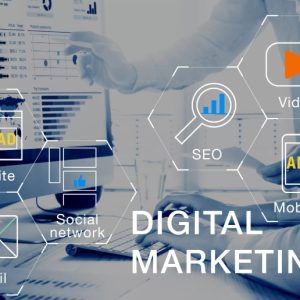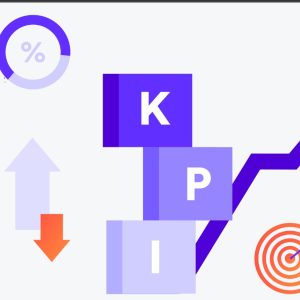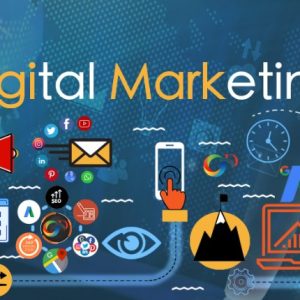Discover Geolocation Marketing: Concepts and Strategies
In the world of Digital Marketing, it is possible to find different strategies for the success of a project. Among them, we have Geolocation Marketing, a robust design that allows companies to reach their target audience in a more precise and relevant way. In practical terms, it is possible to achieve more qualified leads through geolocation marketing.
In this article, we will explore the universe of geolocation marketing, from its fundamental concepts to advanced techniques, success stories and integration with local SEO strategies. Want to dive into the different facets of this innovative strategy? Then read on!
What is Geolocation Marketing?
Quickly and straightforwardly, geolocation marketing (or Geomarketing) is a method that uses location technology – such as GPS (Global Positioning System) – to target and engage a specific audience based on geographic position. It can be used through different techniques and tools that collect location information, allowing businesses to connect with customers in a highly relevant approach.
Local SEO as an essential component of Geolocation Marketing
Fundamentally, geolocation is finding out where someone or something is. This can be done in several ways and with different tools, such as:
⦁ GPS: The Global Positioning System (GPS) is a system of satellites that can determine a device’s location with an accuracy of a few meters.⦁ Wi-Fi: Wi-Fi hotspots can be used to assess the establishment of a device within a few meters.⦁ Cellular networks: Cellular networks can be used to determine the establishment of a device within a few kilometres.⦁ Bluetooth: Bluetooth can be used to determine the location of nearby devices within a few meters.
Benefits of Geolocation Marketing
Considering that this marketing strategy is innovative and can assist in the most significant number of searches for a company, it presents some essential benefits, including:
Improved local visibility
A geolocation marketing strategy significantly increases your business’s visibility to local customers, which is especially advantageous for brick-and-mortar and small businesses.
Increased relevant traffic
By targeting your audience based on their location, you attract highly relevant traffic, which should result in lower bounce rates and, as a result, higher engagement for your service.
Increased conversions and ROI
Connecting with people near you increases conversion rates, providing a solid return on investment.

Advanced Geolocation Marketing Techniques
Like all good planning for a project involving marketing and, even more so, digital marketing, geolocation marketing has advanced techniques for the effectiveness of actions. Thus, the primary methods are Geofencing, audience segmentation, and push notifications.
Geofencing and how to use it effectively
Geofencing is a technology that allows you to define and delimit specific geographic areas. In other words, it can create a “virtual fence” around a physical location. These areas can be as small as a radius of a few meters or as large as kilometres, depending on the need.
Thus, when mobile devices, such as smartphones, enter or leave these areas, the Geofencing system can trigger predefined actions, such as sending push notifications to the device, displaying relevant advertisements, triggering automated events, or even collecting location data for later analysis.
With Geofencing, it is possible to offer promotions to customers within walking distance of a store, send reminders and whatever else your strategy dictates!
Location-based audience targeting
Audience segmentation by location divides the audience based on geolocation, allowing you to target messages according to area, enabling the creation of campaigns aligned with customers’ specific needs and preferences, and considering where they live, work or frequently.
Georeferenced push notifications
As mentioned in the geofencing section, users can receive a notification on their smartphone when entering certain geographic areas. Georeferenced push notifications allow companies to deliver messages about promotions and news in their content.
A great example of a company that uses push notifications is Uber. Think of moments when you picked up your cell phone and there was a notification about price updates and discount coupons on trips. In addition, fast food chains with apps, such as McDonalds and Burger King, use this strategy, as does Ifood.
Tools and Technologies for Geolocation Marketing
Integrated with these advanced techniques, we also have tools and technologies to support geolocation marketing campaigns.
Map apps
Map applications, such as Google Maps, are fundamental to geolocation strategies. This way, they help customers easily find your business and provide helpful information like opening hours and reviews.
Georeferenced ad platforms
Ad platforms, like Facebook Ads and Google Ads, allow you to create highly targeted campaigns based on location, ensuring the right audience sees your messages.
Location data analysis
Analytics tools allow you to track and evaluate the performance of your geolocation campaigns, helping you adjust your strategies for better results.
Success Stories in Geolocation Marketing
To gain practical insights into how geolocation marketing can transform a business, let’s look at two actual examples of companies that have excelled with this strategy:
Actual examples of companies that stood out with geolocation strategies
Nike: Nike used geolocation marketing to create personalized experiences for customers. For example, customers can see the opening hours of their nearest Nike stores, as well as current offers and discounts.
Starbucks: Starbucks used geolocation marketing to target offers and discounts to customers near one of its stores, increasing store traffic and sales.
The Integration of Local SEO in Geolocation Marketing
As we saw initially, local SEO is crucial for the geolocation marketing strategy. Discover some of these procedures below:
How to optimize your website for local searches
Optimizing your website for local searches is a vital step in your geolocation strategy. Consequently, incorporating georeferenced keywords (such as city or neighbourhood) in page content, titles, and descriptions boosts local visibility.
Creating location-specific landing pages and optimizing relevant information helps drive local traffic. Furthermore, ensuring that the website is responsive on mobile devices is crucial, given that many local smartphone searches occur.
Georeferenced keywords and their importance in Geolocation Marketing
Georeferenced keywords are the backbone of local SEO strategy and geolocation marketing, as by including terms that indicate the location in content and metadata, the chance of the website appearing in relevant searches in the region increases. Local searches connect the business with potential customers looking for what it offers in their area.
To give you an idea, there are already some restaurants and businesses in the United States that use the term “near me” (“near me”, in literal translation) in their name as a reference to online searches carried out by users. Recently, the image below went viral on Twitter due to the curious name of the restaurant: “Thai Food Near Me” (“Thai Food Near Me”, in Portuguese).
Google My Business and Local SEO
Google My Business is a free platform offered by Google that allows businesses and organizations to create detailed profiles for their local activities. Accordingly, these profiles appear in Google search results and maps, providing vital information. This makes discovery and interaction more accessible for people close to the location.
In more detail, if a person searches for a service or product (remember the keyword?), Google will show a list of registered companies that offer what you are looking for. Now, when you search for a specific company, the information provided will be displayed if it is written.
If you have a business, create a Google My Business account and manage your online presence!
How to create and optimize a profile on Google My Business
Firstly, to create your profile on Google My Business, your company must have a Google account (Gmail!). Next, to have an accurate and complete profile, you must offer crucial information to potential customers, such as the name of your business and the industry in which you operate. Finally, include accurate details such as address, opening hours and contact details. Ultimately, incorporating relevant keywords into your business description enriches your optimization for local searches.
The importance of local reviews
Customer reviews are crucial to building a local reputation and influencing purchasing decisions and local SEO. Positive reviews increase customer trust and visibility in search results. Responding to reviews, including negative ones, demonstrates dedication to addressing concerns and improving.
Local Citations and Backlinks for Local SEO
Using local citations and backlinks is an additional strategy for your local SEO and, consequently, for geolocation marketing. First and foremost, local authorities refer to mentions of your business in online directories, business listing platforms, and other web sources. Backlinks, or inbound links, direct from other websites to your website. They are essential for SEO, as search engines consider them as indications of trust and relevance.
Strategies for Building Consistent Local Citations
By building consistent local citations, you lay a solid foundation for local SEO: Keeping information like your name, address, and phone number uniform in local directories reinforces the trustworthiness of your online presence and optimizes your local reach.
Acquiring quality backlinks with a local focus
Obtaining quality backlinks from local sites is a valuable tactic, as these links strengthen your site’s authority and boost your visibility in local search results.
Mobile Optimization e SEO Local
As stated in the topic “The Integration of Local SEO in Geolocation Marketing”, it is of great importance that websites are responsive to mobile devices. Come and understand better why.
The importance of having a responsive website
A responsive website, which adapts perfectly to different devices, including smartphones and tablets, improves the user experience and results in greater engagement, lower bounce rates and increased conversions. Furthermore, a good user experience is viewed favourably by search engines.
Responsiveness correlates with local SEO and geolocation marketing. For example, when we think about users on the streets searching for local businesses and companies from their smartphones, our website must be responsive to the most diverse devices.
Mobile Loading Speed and Local SEO
Website loading speed on mobile devices is a critical factor for local SEO. Pages that load quickly provide a positive experience for users, which directly influences their stay on the site and interaction with the content. Furthermore, for search engines, this factor indicates the site’s quality.
Content Strategies for Local SEO in Geolocation Marketing
How do you create relevant content for a local audience?
Producing relevant content is essential for the success of local SEO and Geolocation Marketing. For this, it is vital to understand your local audience’s needs, interests and challenges. Content should, therefore, cover topics that connect with the community, such as local events, regional news or helpful information specific to the area, as this creates a stronger bond with local users.
Use of georeferenced topics and keywords
When creating content for geolocation marketing, including geotagged topics and keywords is vital! Therefore, search for terms that relate to your business and your location, not forgetting to incorporate them naturally into the content; this way, you optimize your chances of appearing in local searches and increase the site’s relevance for the region’s public.
Measurement and Analysis in Local SEO
After carrying out all the previous processes to create an excellent strategy for Geolocation Marketing and local SEO, it is crucial to know how to measure the results to understand what is working or what should be rethought. Below, we have separated some key metrics and the primary performance analysis and monitoring tools.
Key Metrics to Evaluate Local SEO Success
⦁ Organic traffic to a website: Tracking organic traffic is significant because this metric will show us how many users are finding your website through local search engines.⦁ Click-through rate: Also known as CTR, click-through rate is essential as it shows the percentage of people who click on your website’s local search results.⦁ Conversion rate: The conversion rate provides relevant data about users who visited your website and took action, such as making a purchase or contacting you.⦁ Local search ranking: Local search ranking is crucial because it shows where your site ranks in local search results.
Using analytics tools to monitor local SEO performance
Using analysis and monitoring tools is essential in continuously evaluating local SEO. Platforms like Google Analytics and SEMrush allow you to monitor traffic, user behaviour and search keywords. These insights guide future decisions, helping to optimize geolocation strategies for better results constantly.
With all this in mind, Geolocation Marketing is an essential approach for companies looking to stand out in the digital environment, providing highly relevant customer experiences. The integration of local SEO, the use of advanced technologies and data analysis are crucial elements to maximize the benefits of this innovative strategy. Therefore, by adopting a comprehensive and well-planned approach to Geolocation Marketing, businesses can reap the rewards of greater local visibility, improved engagement and significant conversions.





















